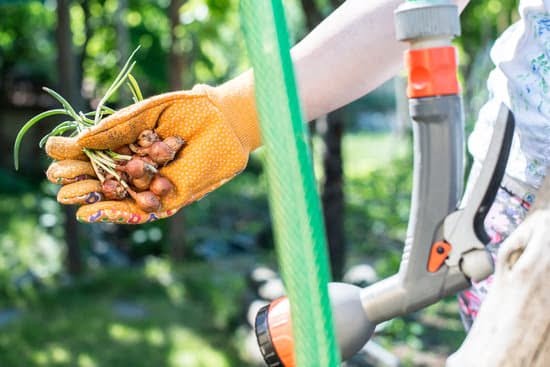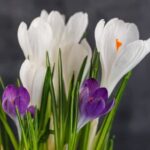Creating a wildlife-friendly garden is not only beneficial for the environment but also for your own enjoyment. In this article, we will explore small wildlife garden layout designs and how you can attract small wildlife to your garden space. From assessing your garden space to selecting wildlife-friendly plants, creating shelters, providing water sources, and designing with wildlife habitats in mind, we will cover everything you need to know to create a thriving ecosystem within your own backyard.
By creating a small wildlife garden, you can contribute to the conservation of local biodiversity, support pollinators, and enjoy the beauty of nature right outside your doorstep. Whether you have a small backyard or just a corner of your outdoor space to work with, there are numerous strategies and design ideas that can help you maximize the potential of even the smallest garden spaces.
Throughout this article, we will provide tips and inspiration for designing a diverse and balanced ecosystem within your small garden. By incorporating native plants, creating shelter for insects and birds, providing water sources, and mimicking natural habitats within your garden design, you can attract a variety of small wildlife species while creating a beautiful and sustainable outdoor space.
So let’s dive into the world of small wildlife garden layout designs and discover how you can transform your garden into a thriving habitat for local wildlife.
Assessing Your Garden Space
When planning to create a small wildlife garden, the first step is to assess the available space. Take into consideration the size and layout of your garden area, as well as any existing features such as trees, shrubs, and other landscaping elements. It’s important to understand the potential of your garden space in order to maximize its benefits for small wildlife.
Factors such as sunlight exposure, soil type, and local climate should also be considered when assessing your garden space. These elements will influence the types of plants that can thrive in your garden and the variety of small wildlife that can be attracted to it. Additionally, think about how you want to use the space and whether there are any specific areas where you would like to prioritize wildlife-friendly features.
For those with limited outdoor space, there are still plenty of opportunities to create a thriving wildlife garden. Maximizing the potential of a small garden space involves careful planning and creative design ideas. With some strategic thinking and thoughtful consideration of your garden’s unique features, you can create a beautiful and inviting habitat for small wildlife.
| Factors to Consider | Details |
|---|---|
| Sunlight Exposure | Consider how much sunlight different areas of your garden receive throughout the day. |
| Soil Type | Assess the quality and type of soil in your garden, which will impact plant selection. |
| Climate | Understand the local climate conditions to choose plants that will thrive in your area. |
Selecting Wildlife-Friendly Plants
When it comes to creating a wildlife-friendly garden, one of the most important aspects to consider is the selection of plants that will attract and support small wildlife. Native plants play a crucial role in providing food, shelter, and breeding grounds for a variety of insects, birds, and other wildlife.
When selecting plants for your garden, it is essential to choose those that are attractive to pollinators such as bees and butterflies, as they play a vital role in maintaining ecosystem health.
Some popular choices for wildlife-friendly plants include wildflowers like coneflowers, black-eyed susans, and milkweed, which provide nectar for pollinators and food for caterpillars. Additionally, flowering herbs like lavender and rosemary are also great options for attracting beneficial insects. By integrating these native and pollinator-friendly plants into your garden design, you can create a diverse and balanced ecosystem that will benefit both the wildlife and the overall health of your garden.
To ensure the success of your wildlife garden, it’s important to choose plants that bloom at different times throughout the year. This will ensure a consistent supply of nectar and pollen for visiting insects.
Furthermore, incorporating a mix of plant species with varying heights and textures can create different layers within your garden, providing hiding spots and nesting areas for small wildlife. Overall, thoughtful consideration when selecting wildlife-friendly plants is key to fostering a flourishing ecosystem within your small garden space.
Creating Shelter for Wildlife
Creating shelters for small wildlife in your garden is an essential aspect of designing a wildlife-friendly space. By providing these shelters, you are not only attracting wildlife to your garden but also offering them a safe place to live and raise their young. There are various types of shelters that can be incorporated into your garden, including those designed for insects, birds, and other small animals.
Insects play a crucial role in our ecosystem, and by providing shelter for them in your garden, you can help maintain a balanced and healthy environment. Insect hotels, made from natural materials such as wood, bamboo, and sticks, can be installed to offer refuge for solitary bees, ladybugs, and other beneficial insects. These insect hotels provide protection from predators and the weather while also offering a place for these insects to breed.
When it comes to creating shelter for birds in your garden, birdhouses or nesting boxes are the way to go. These structures provide a safe spot for birds to build nests and raise their young. Different bird species have varying requirements when it comes to the size and design of their nesting boxes, so it’s important to research which types of birds are native to your area and tailor the design of the birdhouses accordingly.
Additionally, there are innovative design ideas for incorporating shelters into your garden that go beyond traditional structures. For example, planting dense shrubs or creating brush piles can also offer hiding spots and protections for small wildlife. By taking these different shelter options into account when planning your garden layout design, you can ensure that your outdoor space becomes a welcoming haven for all kinds of small creatures.
Providing Water Sources
When creating a small wildlife garden, it is important to provide a water source for the creatures that you are hoping to attract. Here are some important ideas and tips to consider when providing water sources for small wildlife in your garden:
- Bird baths are a simple and effective way to attract different bird species to your garden. Ensure the birdbath is shallow enough for small birds and insects, and keep it clean and filled with fresh water regularly.
- A small pond or water feature can be an attractive addition to your wildlife garden, providing a habitat for amphibians, insects, and even small mammals. Consider adding plants around the pond to create a natural-looking environment.
- Dripping or running water can be especially attractive to wildlife such as butterflies and bees. Incorporating a dripping water source into your garden design can help provide a consistent water supply.
Remember that maintaining a safe and clean water source for wildlife is crucial for their health and wellbeing. It’s also important to ensure that there is easy access to the water sources, with rocks or branches leading into the water for smaller animals that may struggle with steep edges. By incorporating these ideas into your garden design, you can create an inviting space that not only looks beautiful but also provides essential resources for small wildlife.
Designing With Wildlife Habitats in Mind
Designing a garden with wildlife habitats in mind is an essential aspect of creating a small wildlife-friendly space. By mimicking natural habitats within your garden, you can attract a variety of small wildlife and contribute to the overall biodiversity of your local ecosystem.
Mimicking Natural Habitats
One of the key principles in designing a wildlife-friendly garden is to mimic natural habitats as much as possible. This can be achieved by incorporating different features such as meadows, woodlands, and water sources into your garden design. By creating these diverse environments, you can attract a wide range of small wildlife including birds, insects, and other creatures that rely on specific habitats for survival.
Creating Microhabitats
Another important consideration when designing with wildlife habitats in mind is to create different microhabitats within your garden. This involves providing different areas for nesting, feeding, and shelter for various types of wildlife. For example, you can include bird boxes for nesting birds, log piles for insects, and hedgehog houses for small mammals. By diversifying the available microhabitats within your garden, you can cater to the diverse needs of different species.
Design Ideas
When it comes to incorporating different levels and layers within your garden to attract wildlife, there are several design ideas that you can explore. Utilizing plants of varying heights and structures can create a multi-layered effect that provides cover and food sources for different types of wildlife.
Additionally, creating pathways or connective corridors within your garden can help facilitate movement for small creatures such as hedgehogs and frogs. These design elements not only enhance the aesthetic appeal of your garden but also serve as essential features for attracting and supporting small wildlife populations.
Maintaining Your Wildlife Garden
Once you have successfully designed and implemented your small wildlife garden, it is essential to maintain it to ensure a healthy and thriving ecosystem for the small wildlife in your area. Here are some best practices for maintaining a wildlife-friendly garden:
- Regularly monitor your garden: Keep a close eye on the plants, water features, and shelters in your garden to ensure they are in good condition and continue to attract small wildlife.
- Prune and weed carefully: When maintaining your garden, be mindful of the wildlife that may be using it as their habitat. Carefully prune plants and remove weeds without disturbing potential nests or homes.
- Use sustainable gardening practices: Incorporate eco-friendly practices such as composting, mulching, and natural pest control methods to minimize the use of harmful chemicals that can be detrimental to wildlife.
In addition to these best practices, it’s important to manage pest and disease issues in a way that is wildlife-friendly. Instead of resorting to chemical pesticides, consider natural alternatives such as introducing beneficial insects or hand-picking pests. By taking a holistic approach to maintenance, you can create a healthy environment for both your garden and the small wildlife that depend on it.
Finally, remember that your efforts in maintaining a wildlife garden contribute positively not just to the local ecosystem but also have an impact on the larger environment. Small changes can make a significant difference when it comes to promoting biodiversity and creating sustainable habitats for diverse species of wildlife.
Showcasing Real-Life Small Wildlife Garden Layout Designs
Successful Small Wildlife Gardens
There are numerous examples of successfully designed small wildlife gardens that serve as inspiration for those looking to create their own. These real-life gardens showcase how it is possible to attract and support a wide variety of small wildlife within a limited space. From urban backyard gardens to small community green spaces, these real-life examples demonstrate creative and effective ways to incorporate wildlife-friendly elements into the design.
One successful example is the “Pollinator Paradise” garden in the heart of the city. This small garden features a diverse selection of native plants that attract butterflies, bees, and hummingbirds. The garden also includes various shelter options such as bee hotels and birdhouses, as well as a small water feature. Despite its size, this garden has become a thriving habitat for many different species of pollinators and other small wildlife.
Case Studies of Diverse Layouts
In addition to showcasing successful small wildlife gardens, it is important to explore the diverse layouts that have been implemented in different locations. From vertical gardens on apartment balconies to communal gardens in residential areas, there are many innovative ways to design a wildlife-friendly space within a limited area.
Each case study provides valuable insights into how design choices can impact the types of wildlife attracted to the area and how different layouts can maximize space for both plants and animals.
One noteworthy case study is the “Community Wildlife Garden,” which was established in a tight urban space with limited ground area. The garden utilizes vertical planting techniques, hanging baskets, and strategically placed shelters to create a vibrant ecosystem within a confined area. This case study serves as an excellent example of how thoughtful design can make it possible for even the smallest of spaces to support local wildlife populations.
Tips for Implementing Design Ideas
After exploring these real-life examples and case studies, it becomes clear that there are numerous design ideas that can be adapted and implemented into various garden spaces. Whether it’s utilizing vertical space for planting, incorporating water features, or strategically selecting native plants, there are countless ways to create a welcoming environment for small wildlife.
By taking inspiration from these real-life designs and applying practical tips for implementation, individuals can create their own unique small wildlife garden layout designs based on their available space and personal preferences.
Conclusion
In conclusion, creating a small wildlife garden layout design is not only beneficial for the environment but also for your own enjoyment and connection with nature. By providing a habitat for small wildlife, you are contributing to the preservation of biodiversity and creating a balanced ecosystem within your own backyard.
The benefits of attracting small wildlife to your garden are numerous, including natural pest control, pollination of plants, and the simple joy of observing and interacting with the diverse array of creatures that visit your garden.
As showcased in this blog post, there are various ways to assess your garden space, select wildlife-friendly plants, create shelters, provide water sources, and design with wildlife habitats in mind. It’s important to remember that even a small garden can have a big impact on local wildlife populations. By incorporating sustainable gardening practices and maintaining a healthy environment for both plants and animals, you can play an active role in supporting the well-being of the natural world.
In closing, we hope that this blog post has inspired you to consider creating your own small wildlife garden layout design. Whether you have a tiny balcony or a spacious backyard, there are endless possibilities for attracting and supporting small wildlife in your garden.
We encourage you to embrace the challenge and experience the satisfaction of seeing your efforts flourish into a thriving habitat for local birds, insects, mammals, and more. With thoughtful planning and dedication, you can make a difference in conservation efforts while enjoying the beauty of nature right outside your door.
Frequently Asked Questions
What Are the Four Main Components of a Wildlife Garden?
The four main components of a wildlife garden are food, water, cover, and places to raise young. These elements are essential for providing a habitat that is attractive and beneficial for a variety of wildlife species. Incorporating native plants, bird feeders, water features, and natural shelter can help create a welcoming environment for birds, insects, mammals, and other wildlife.
How Do You Structure a Small Garden?
Structuring a small garden involves careful planning and maximizing the use of space. Utilizing vertical gardening techniques such as trellises and hanging planters can help make the most of limited space.
Creating designated areas for different types of plants and using containers or raised beds can also help maintain organization in a small garden. Additionally, incorporating pathways and focal points can enhance the visual appeal while providing functionality.
What Is the Best Garden for Wildlife?
The best garden for wildlife is one that includes a diverse range of native plants that provide food sources throughout the year. Native plants are well-suited to the local climate and attract local wildlife species that have evolved alongside them.
It’s important to avoid using chemical pesticides and herbicides in order to protect both the plants and the visiting wildlife. Additionally, providing water sources such as birdbaths or ponds can further enhance the garden’s appeal to various animal species.

Welcome to my gardening blog! I am passionate about plants and enjoy sharing my knowledge and experiences with others. In this blog, I will write about everything related to gardening, from tips on how to get started to updates on my own garden projects.





